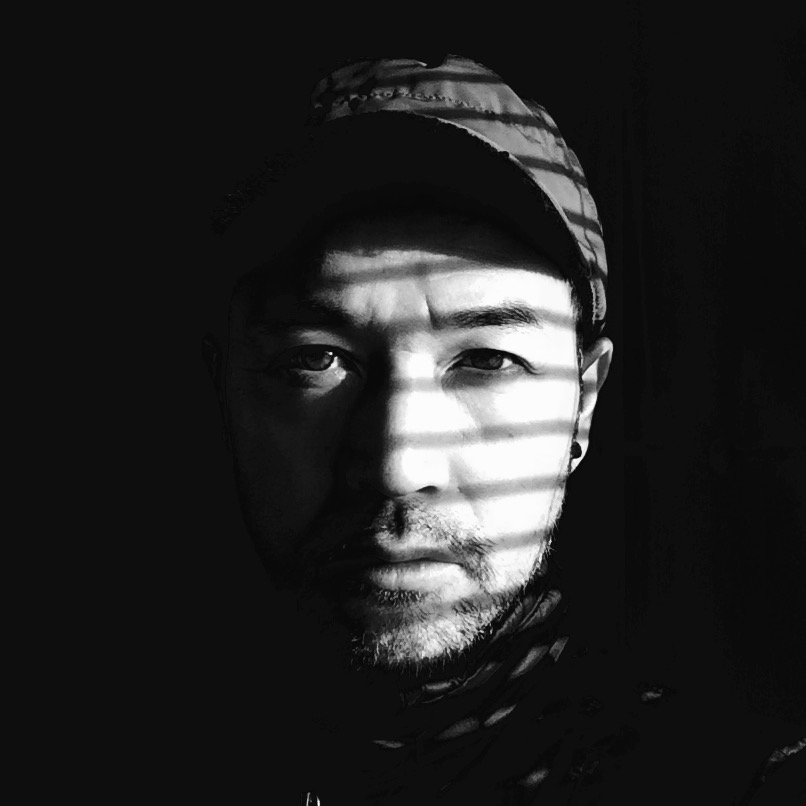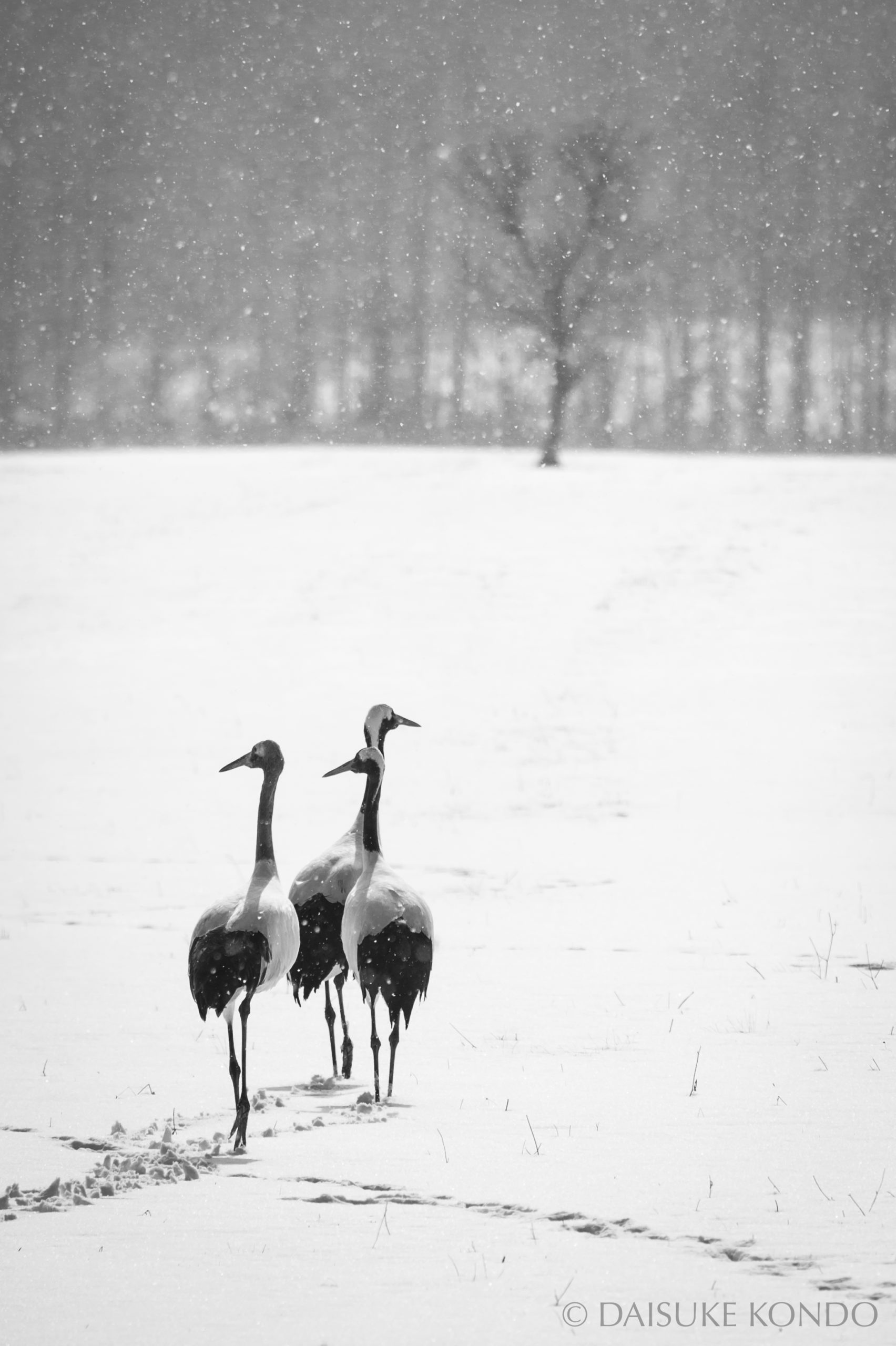At Asia Art Tours, we’re fortunate to offer touring with Premier Hokkaido Photographer Daisuke Kondo, helping travelers explore Japan’s wild north. We spoke to Daisuke on photography, what drew him to Hokkaido, and how art and nature intersect.
 Q1: ! How did you discover Hokkaido and why did you decide to photograph it’s wildlife?
Q1: ! How did you discover Hokkaido and why did you decide to photograph it’s wildlife?
Although part of my childhood was spent in Hokkaido, I didn’t really fathom the depth of this island’s beauty until I was nearly 20. After completing my training to become a rafting guide in Australia, I decided to set up base in the mountains of Hokkaido and throw myself into the outdoor lifestyle. With each season that passed, my appreciation of my surroundings grew. I took to hiking more and more, and began camping in Hokkaido as well. Soon after the lure of Hokkaido snared me and I moved here full time about 18 years ago. I upped my nature trips on these trips I’d take a few lenses and shoot the surrounding nature: at times virgin forests and at others, I’d snowshoe in the mountains and was continually drawn deeper into the lull of Hokkaido’s beauty. I got lucky a few times and shot some owls, cranes and a squirrel even stole a piece of my gear. (I have the photo series to prove it). The wildlife here is elusive at times and you have to really want to find it in order to shoot it. A fair bit of Hokkaido’s wildlife has taken a hit with deforestation and expansion, and a few of its creatures have been officially declared extinct. I thought that through photography, it could raise awareness and… It was a great opportunity to share my perception of life, and my love of Hokkaido with other who had yet to visit. That’s more the long than the short of it… I haven’t really gotten many chances to take wildlife photos as much as I’d like, but I do love nature photography and that does include wildlife.
 Q2: Could you describe the winter in Hokkaido? What makes it such a interesting and beautiful setting for Photography? Are there any difficulties from Winter Photography?
Q2: Could you describe the winter in Hokkaido? What makes it such a interesting and beautiful setting for Photography? Are there any difficulties from Winter Photography?
Hokkaido’s winter… The beauty of Hokkaido’s winter lays in its pristine beauty. It’s absolutely unspoiled, and a usually lush green landscape from forests and fields to volcanoes and beaches becomes covered in a feathery white blanket of the whitest snow. If you catch it in daylight it’s like a desert of diamonds. If you catch it on a windy day it’s like a white sand desert. With the snow and wind, no two days are alike. Then you’ve got the peeks of green and red, winter plants that make their appearance and the animals who leave hints of their existence by way of their tracks. You’ve got rushing rivers whose banks are covered with ice and you’ve got the bluest sky against the whitest snow. What’s not to love? It’s serene and untouched. The city in winter is also spectacular; it’s like a huge white brush just glosses over the cemented cities and absolves them of sin. But.. with it, like you say, is a bit of difficulty. Wildlife in Hokkaido is fleeting. Just because you’re out there ready to shoot, doesn’t meant that the animals are ready for you. You have to work hard to find places and have to devote a lot of time and effort. There are places you can go; and sometimes the wildlife comes to you (there are foxes in the park across from my apartment and deer tracks everywhere) but it takes time, patience and a bit of devotion.
 Q3: What is your favorite setting to photograph in Hokkaido? Does that setting have a deeper history to Hokkaido’s history or culture?
Q3: What is your favorite setting to photograph in Hokkaido? Does that setting have a deeper history to Hokkaido’s history or culture?
My favorite setting in Hokkaido? It has to be winter.. I’m not really sure if there’s just one setting in particular, it’s more of the contrast between Light and Dark. White and Black. Winter Nature versus Winter City. I also shoot winter because I feel that that is when nature is reclaimed by Mother Nature.. it’s a reminder that nature is bigger than our impact on it. At least that’s the way it seems. Because the snowfall in Hokkaido is so great, and winter here longer than the average 4 months, many roads and areas become inaccessible, and because of the winter runoff in spring the chances and possibilities of people visiting and leaving their marks on so many places is practically nonexistent. It remains unspoiled. Hokkaido, in this vastly overpopulated country, has been only very recently settled by the national “Japanese”. Up until early this century it was completely inhabited by the Ainu people and we have remnants of the time in Japanese prehistory (dated between c. 14,000 – 300 BCE) called the Jomon Jidai. There’re fully visible prehistoric rock circles in a few places and because of its inaccessibility and long winters our ties to the past are stronger than that of most other places in Japan.
 Q4: one of my most memorable experiences in Japan was going with you to the little town of Tsurui to see “Crane Granny”. Could you tell us a bit about her? And could you tell us a bit about Hokkaido’s cranes, why are they so important and so often photographed?
Q4: one of my most memorable experiences in Japan was going with you to the little town of Tsurui to see “Crane Granny”. Could you tell us a bit about her? And could you tell us a bit about Hokkaido’s cranes, why are they so important and so often photographed?
This is a bit of a sad story. My only meeting with the Crane Granny was when you and I were together, back in the summer of 2014. As you know, she’s from Tsurumidai, and was one of the pivotal local people who helped contribute to the growing numbers of cranes. She was saying that when she began feeding the cranes over 45 years ago, only two used to feed. From that time their numbers swelled to about 300. She has been negatively affected by the increase of corporatocracy. Across the street from her home a tourist “Rest Area” was built. The Rest House was built in front of the land on which the cranes would normally fly to to rest at at night. Because of the location she told me that some of the birds flew into the sides of the windows; causing their deaths. She also told me that the flapping flags that welcome people or advertise soft ice cream frightened off many of the cranes. The Crane Granny also mentioned that the influx of tourism has had a negative impact on the nature and subsequently; the cranes themselves. It’s sad, but also a bit of a warning and a catch 22. We need awareness, but with awareness expansion sometimes follows, and unless expansion comes hand-in-hand with proper education we can end up doing more damage than good. A sad lesson, but an important one. She’s seen a lifetime and is very set in her ways, at the same time, we can learn so much from our elders. Another aspect of Japanese society.

Q5: We really like to work hard to promote the knowledge of the Ainu with our travelers. Who are the Ainu and why are they still important to understanding Hokkaido?
The Ainu people are truly an interesting ethnic group. They are the true “Japanese”, the first people to this particular island and the longest surviving ethnicity. They are the indigenous people of Hokkaido. Their DNA has recently been linked to those of the Nunavutians in North America and the Eskimos in Alaska, as well as the Okinawan Japanese and has been found as far as Tibet. Their DNA is also distinct from the genetic makeup of most Japanese Nationals; that include aspects of the Mongolian, Korean and Chinese. Unfortunately, like most first nations people across the globe, they’ve oftentimes been treated unfairly, lost their rights to their ancient ways of life and have been relegated to smaller strips of land within their original territory. At the same time, there’s been a recent influx of tourism to Hokkaido and it’s given the Island of Hokkaido a chance to promote awareness locally with Japanese people as well as with foreign visitors. Sadly, so many Japanese people don’t actually realize or know the actual history of our origins and ties to the Ainu people. To understand who we are, we need to know where we come from. That’s true of any society. And in this case, we’re just taking the first steps to understand their importance and contribution to Hokkaido.

Q6: Lastly, in Japan art and nature often inspire one another. What inspires you about the Hokkaido Nature and how does it inspire other artists?
The nature here is indefatigable. . . it keeps me on my toes and surprises me. Even though I can get cold and wet, by the time I come back from a photo trip, I’m already thinking about my next one. It keeps me excited and inspires me to find more hidden gems. In the summer a few years back, I did a series on flowing water. On one of my trips past an abandoned Shrine and just on the outskirts of the city, I photographed a waterfall called, Heiwa No Taki (Waterfall of Peace). It wasn’t that huge or anything but I waded across the water to the opposite banks and found a snake deity carved into a solid piece of rock, covered with moss. It’s things like that, that inspire to find more secrets, hidden by nature. That was the only time I saw anything left by man, but… I’ve stumbled across countless spots of beauty hidden in the midst of this land…sometimes not so far from the city. This place has a strong call to many artisans. My wife’s bandmate is a phenomenal musician, (and this ties into your last question about the Ainu). He’s from the Eastern coast and loves Hokkaido deeply. He’s multi-talented and his love of Hokkaido has inspired him to create a new instrument made of wood, carved with sacred Ainu designs, to help promote local talent and awareness of the Ainu people. You can find artists; both amateur and professional, painting watercolors in the park, or on the side of an active volcanoe that’s been smothered in the colors of autumn. My wife has written, recorded and performed songs inspired by our trips into nature. There are many other artists, world renowned and even more smaller ones. There’s a cafe in Asabu that has its walls covered with art by local artists; some of whom have been inspired by the beauty of Hokkaido

Email Matt@AsiaArttours.com today to set up your tour with Daisuke!

